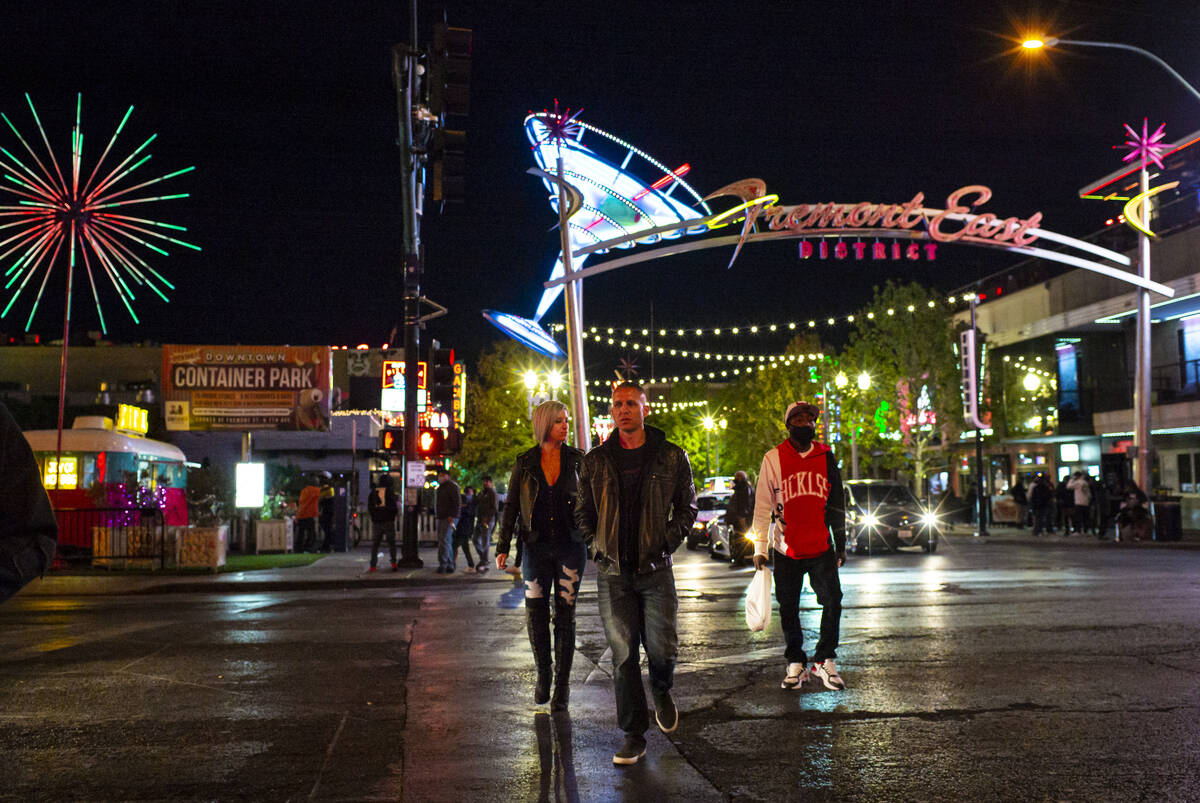Downtown Las Vegas recovered better than other US cities, economists say
Downtown Las Vegas’ recovery from the COVID-19 pandemic was more resilient than other American cities, but some economists say the region will need to diversify to keep up growth in the long term.
Economists discussed the resiliency of American downtowns — and how Las Vegas compares — during a panel at UNLV’s Center for Business and Economic Research’s Fall Outlook event.
Karen Chapple, an urban studies researcher at University of Toronto, studied the resiliency of downtowns using mobile phone location data, measuring how many people had stopped in a particular area. The results showed multiple Southwestern cities had stronger returns to the downtown core, at least partially attributed to weather and tourism. Las Vegas’ downtown recovered to 103 percent of its pre-pandemic mobile phone activity.
U.S. cities that were facing slower returns to their downtowns had higher concentrations of jobs in professional, scientific and technical fields, Chapple’s research found. Other factors measured included the area’s availability of accommodation and food services, commute time and a city’s dependence on cars.
“Turns out that can be the very worst thing you can do for your downtown,” Chapple said. “That’s a lot of lawyers, accountants, management consulting firms and so forth. Those are the folks that are working at home more than any others and that’s why the cities that overspecialized in professional jobs — San Francisco, Seattle, New York, Boston — they’re still suffering from that.”
Chapple said continued growth could be achieved by investing in transit and improving walkability, hosting events or short-term businesses in empty office space and increasing affordable housing stock, among others.
“We have huge potential in the Southwest. There’s development, there’s talk of tech parks and so forth,” Chapple said. “(But) with some caution, because a major lesson from San Francisco, because Silicon Valley was suburban and incredibly congested and workers wanted to be in San Francisco and the commute was too hard for them. So then firms brought their real estate downtown. It’s a lesson that for talent, you really need those downtowns.”
That may be a challenge for the existing development plans. David Swallow, deputy CEO of the Regional Transportation Commission, said developing strong transit plans will help urban economic development, but the challenge is that most growth is on the valley’s periphery.
“That makes it really challenging to extend services out there and the infrastructure to get to those (people) to provide that service,” Swallow said.
But Las Vegas’ recovery does not imply long-term growth. Chapple said diverse regions “have really been able to thrive over time.” She said the region is poised for a strong revenue generator when the Oakland Athletics build a Major League Baseball stadium on the Strip.
Others pointed to growth opportunities in health care. Local government and business leaders have identified the sector as a significant opportunity for diversification as the Las Vegas Medical District, near downtown, grows. Other efforts have included the Helios medical campus in North Las Vegas.
Las Vegas City Councilman Brian Knudsen said he wants to see that diversification grow in the city’s downtown.
“As we think about the downtown moving forward, (we should be) thinking about what doctors want,” Knudsen said. “What will make them want to live in and around the downtown core? It’s going to be schools that their kids can go to, potential research opportunities. That in and of itself creates jobs that generate more revenue.”
McKenna Ross is a corps member with Report for America, a national service program that places journalists into local newsrooms. Contact her at mross@reviewjournal.com. Follow @mckenna_ross_ on X.

















